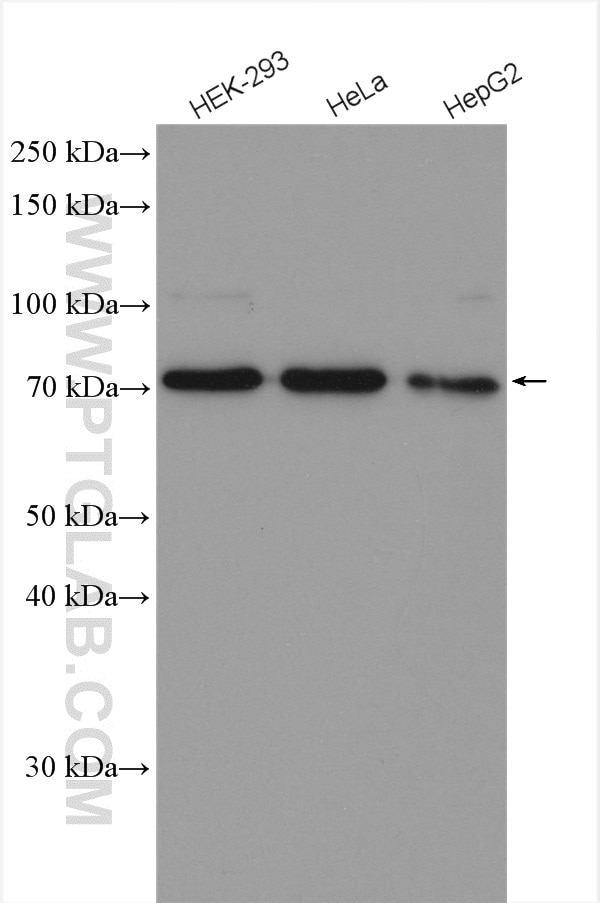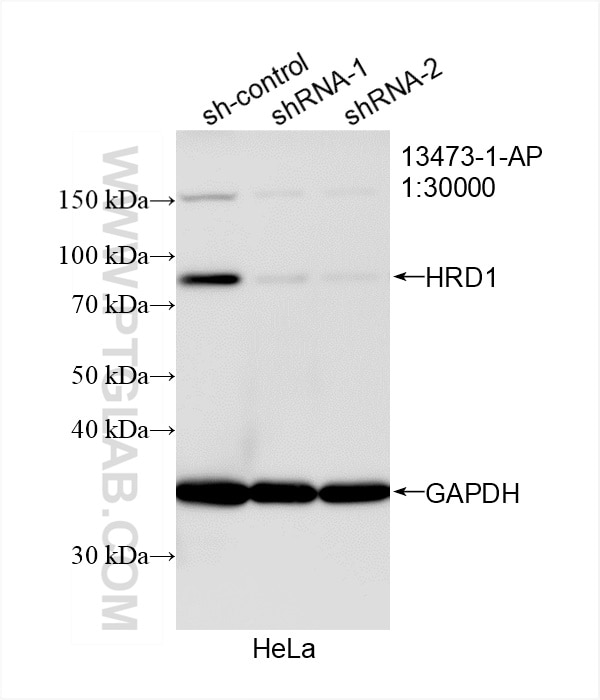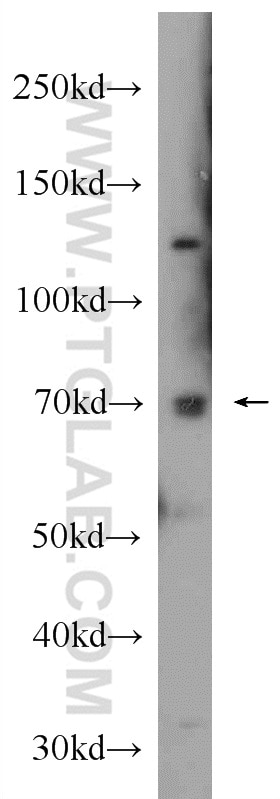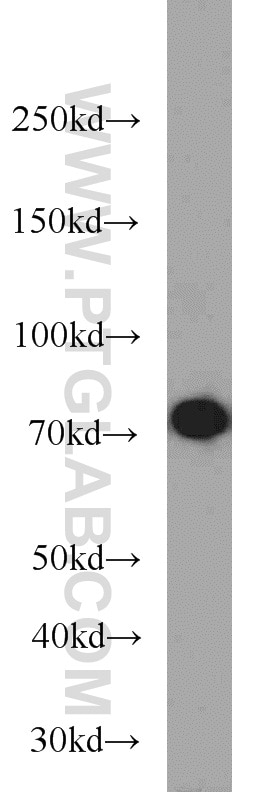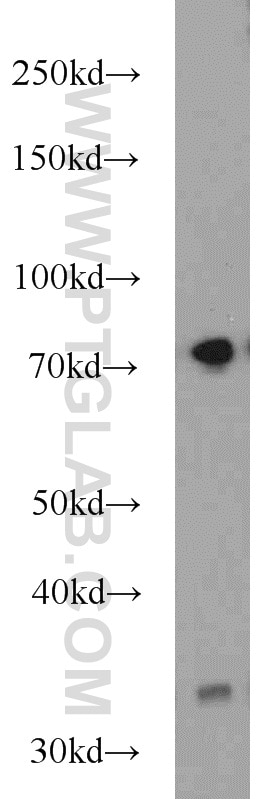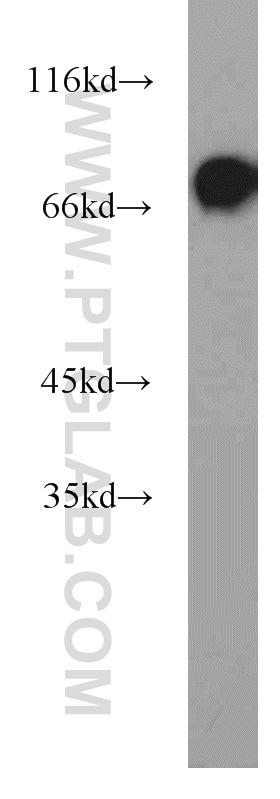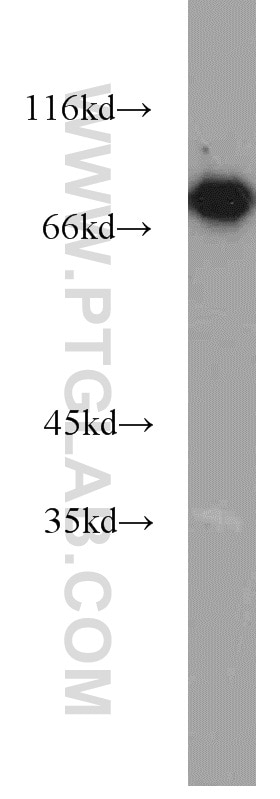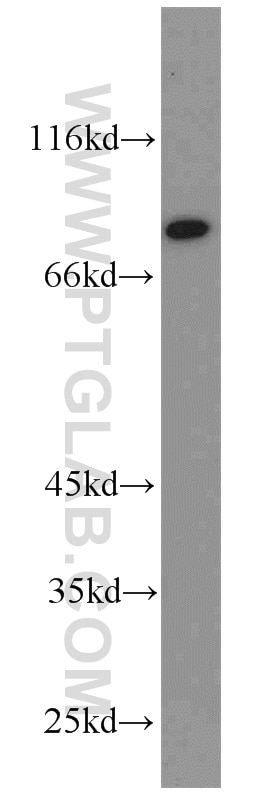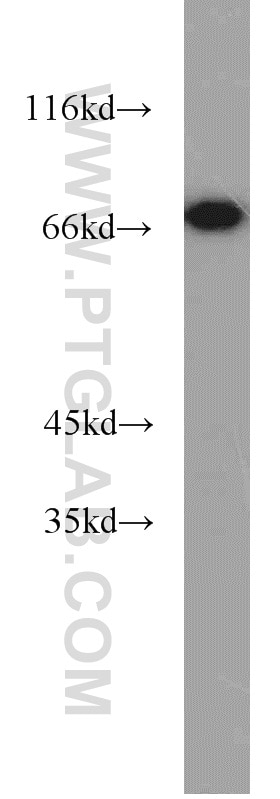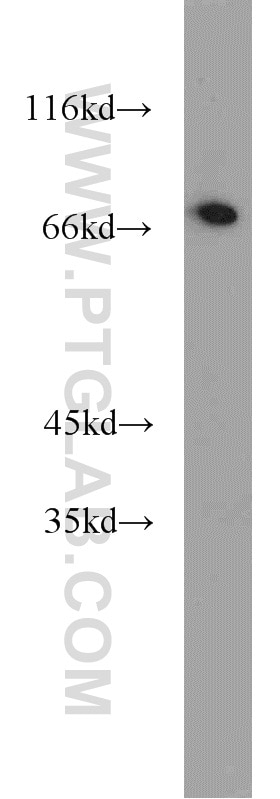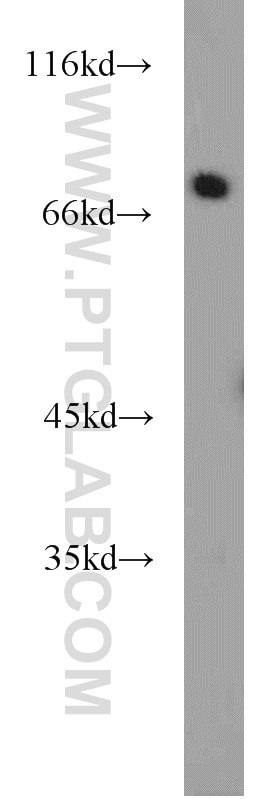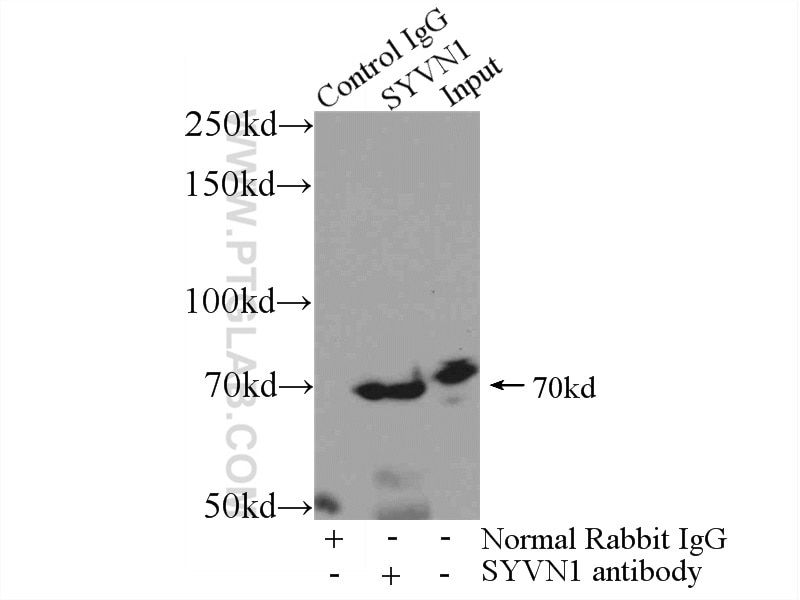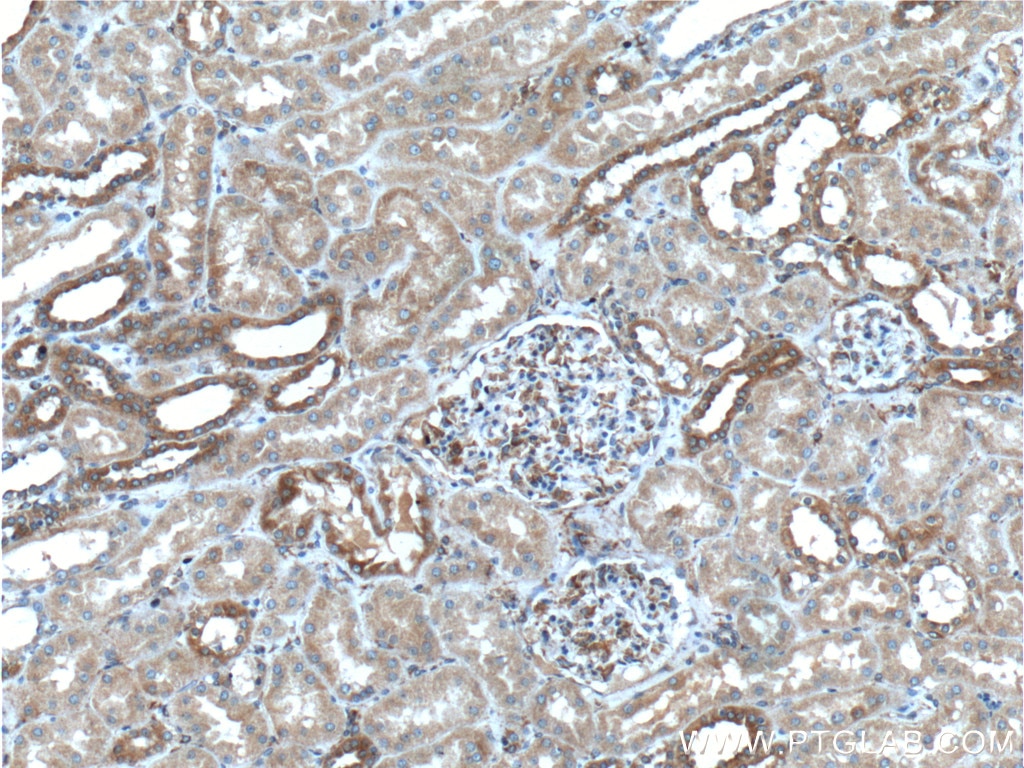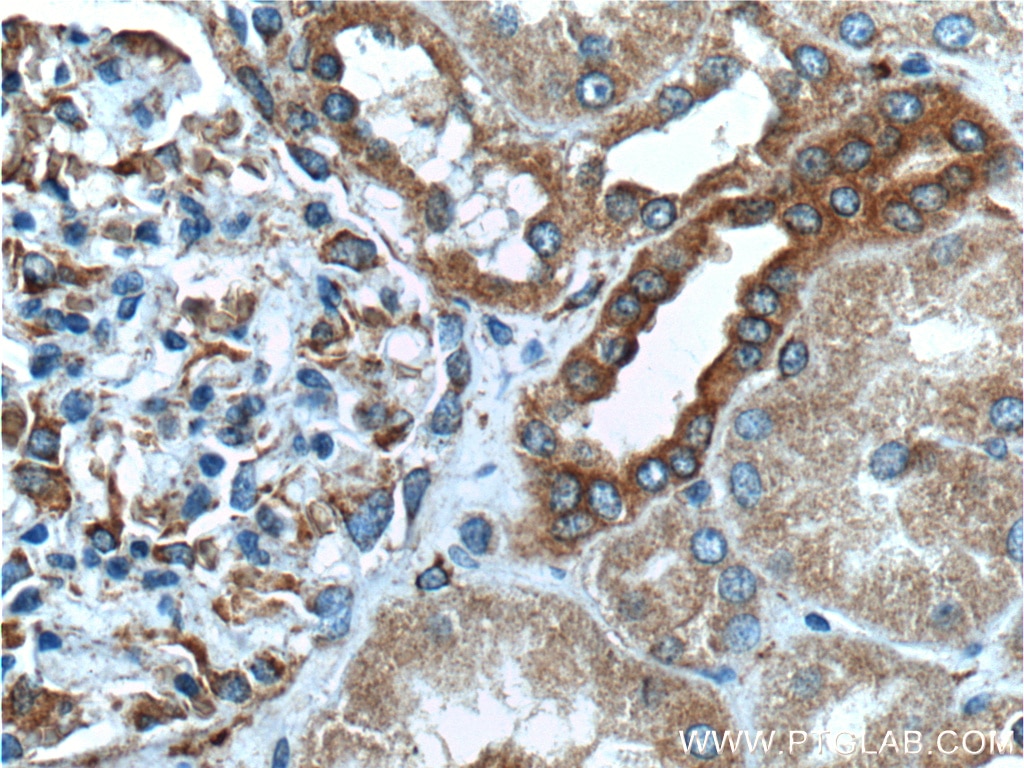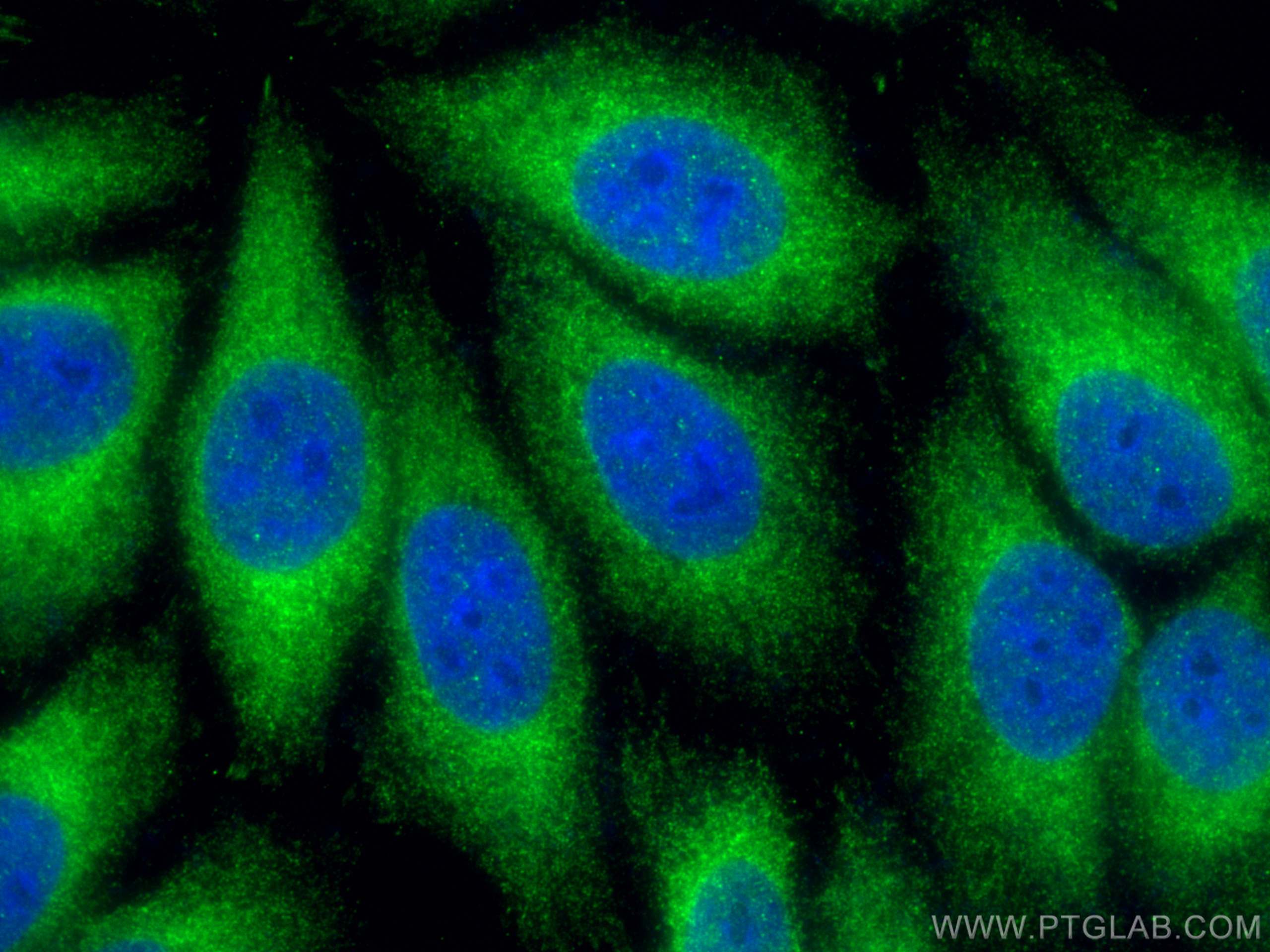- Featured Product
- KD/KO Validated
HRD1/SYVN1 Polyklonaler Antikörper
HRD1/SYVN1 Polyklonal Antikörper für WB, IHC, IF/ICC, IP, ELISA
Wirt / Isotyp
Kaninchen / IgG
Getestete Reaktivität
human, Maus, Ratte
Anwendung
WB, IHC, IF/ICC, IP, CoIP, IP-MS, ELISA
Konjugation
Unkonjugiert
Kat-Nr. : 13473-1-AP
Synonyme
Galerie der Validierungsdaten
Geprüfte Anwendungen
| Erfolgreiche Detektion in WB | HEK-293-Zellen, HeLa-Zellen, HepG2-Zellen, Maus-Eierstockgewebe, Maus-Magengewebe, Mausnierengewebe, Maus-Pankreasgewebe, MDA-MB-453s-Zellen, NIH/3T3-Zellen, Raji-Zellen, Ratten-Magengewebe |
| Erfolgreiche IP | Mausnierengewebe |
| Erfolgreiche Detektion in IHC | humanes Nierengewebe Hinweis: Antigendemaskierung mit TE-Puffer pH 9,0 empfohlen. (*) Wahlweise kann die Antigendemaskierung auch mit Citratpuffer pH 6,0 erfolgen. |
| Erfolgreiche Detektion in IF/ICC | HepG2-Zellen |
Empfohlene Verdünnung
| Anwendung | Verdünnung |
|---|---|
| Western Blot (WB) | WB : 1:1000-1:4000 |
| Immunpräzipitation (IP) | IP : 0.5-4.0 ug for 1.0-3.0 mg of total protein lysate |
| Immunhistochemie (IHC) | IHC : 1:50-1:500 |
| Immunfluoreszenz (IF)/ICC | IF/ICC : 1:50-1:500 |
| It is recommended that this reagent should be titrated in each testing system to obtain optimal results. | |
| Sample-dependent, check data in validation data gallery | |
Veröffentlichte Anwendungen
| KD/KO | See 12 publications below |
| WB | See 52 publications below |
| IHC | See 3 publications below |
| IF | See 7 publications below |
| IP | See 6 publications below |
| CoIP | See 4 publications below |
Produktinformation
13473-1-AP bindet in WB, IHC, IF/ICC, IP, CoIP, IP-MS, ELISA HRD1/SYVN1 und zeigt Reaktivität mit human, Maus, Ratten
| Getestete Reaktivität | human, Maus, Ratte |
| In Publikationen genannte Reaktivität | human, Maus, Ratte |
| Wirt / Isotyp | Kaninchen / IgG |
| Klonalität | Polyklonal |
| Typ | Antikörper |
| Immunogen | HRD1/SYVN1 fusion protein Ag4267 |
| Vollständiger Name | synovial apoptosis inhibitor 1, synoviolin |
| Berechnetes Molekulargewicht | 617 aa, 68 kDa |
| Beobachtetes Molekulargewicht | 68-76 kDa |
| GenBank-Zugangsnummer | BC030530 |
| Gene symbol | HRD1 |
| Gene ID (NCBI) | 84447 |
| Konjugation | Unkonjugiert |
| Form | Liquid |
| Reinigungsmethode | Antigen-Affinitätsreinigung |
| Lagerungspuffer | PBS mit 0.02% Natriumazid und 50% Glycerin pH 7.3. |
| Lagerungsbedingungen | Bei -20°C lagern. Nach dem Versand ein Jahr lang stabil Aliquotieren ist bei -20oC Lagerung nicht notwendig. 20ul Größen enthalten 0,1% BSA. |
Hintergrundinformationen
HRD1is also named as SYVN1(Synovial apoptosis inhibitor 1) , KIAA1810. It acts as an E3 ubiquitin-protein ligase which accepts ubiquitin specifically from endoplasmic reticulum-associated UBC7 E2 ligase and transfers it to substrates, promoting their degradation. Two distinct binding sites mediate Hrd1 dimerization or oligomerization, one located within the transmembrane region and another within the cytosolic domain. (PMID:19864457).Western blot analysis detected abundant HRD1 expression in liver and kidney. Mouse liver and spleen expressed Hrd1 as an 85-kD protein(PMID:12646171).
Protokolle
| Produktspezifische Protokolle | |
|---|---|
| WB protocol for HRD1/SYVN1 antibody 13473-1-AP | Protokoll herunterladen |
| IHC protocol for HRD1/SYVN1 antibody 13473-1-AP | Protokoll herunterladen |
| IF protocol for HRD1/SYVN1 antibody 13473-1-AP | Protokoll herunterladen |
| IP protocol for HRD1/SYVN1 antibody 13473-1-AP | Protokoll herunterladen |
| Standard-Protokolle | |
|---|---|
| Klicken Sie hier, um unsere Standardprotokolle anzuzeigen |
Publikationen
| Species | Application | Title |
|---|---|---|
Cell Metab AIDA Selectively Mediates Downregulation of Fat Synthesis Enzymes by ERAD to Retard Intestinal Fat Absorption and Prevent Obesity. | ||
J Clin Invest Hypomorphic variants of SEL1L-HRD1 ER-associated degradation are associated with neurodevelopmental disorders | ||
Mol Cancer CircNR3C2 promotes HRD1-mediated tumor-suppressive effect via sponging miR-513a-3p in triple-negative breast cancer. | ||
Mol Cell Redundant and Antagonistic Roles of XTP3B and OS9 in Decoding Glycan and Non-glycan Degrons in ER-Associated Degradation.
| ||
Nat Commun PGRMC1 acts as a size-selective cargo receptor to drive ER-phagic clearance of mutant prohormones. |
